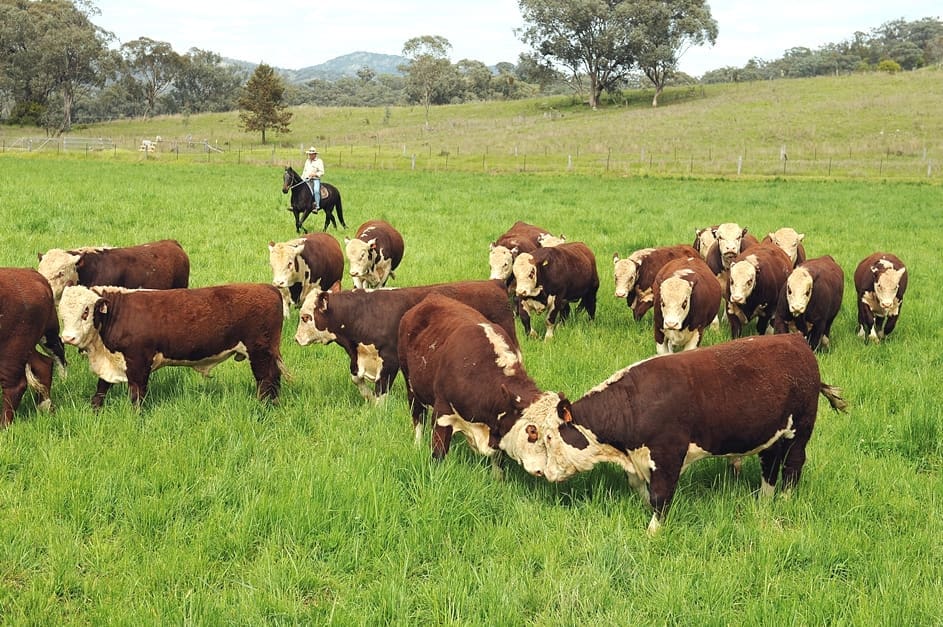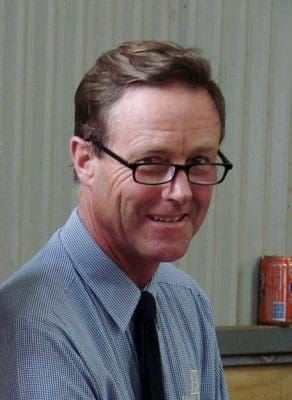
Beef Central’s popular weekly genetics review returns this week, after its recess since the completion of Autumn sales in late April. Weekly spring bull sales coverage will continue each Tuesday, from now through to the end of November.
THE divide between the traditional autumn and spring bull selling seasons is becoming increasingly blurred, as bull sellers jockey for sale-free calendar slots to avoid competition and ensure access to preferred agents and auctioneers.
It used to be that southern Australian on-property bull sales were held in autumn, and northern sales in spring, with a few breed ‘Nationals’ in between.
Now the once-distinct selling seasons have almost merged, and the only real break is a few weeks over Christmas/New Year.
With more than 200 upcoming sales on Genetics Central’s all breeds national list for the reminder of 2017, vendors and buyers are keen to get some pointers about this year’s spring sale price prospects.
The 200 identified sales, of which half are in Queensland, will see more than 11,000 bulls change hands by December.
The Angus spring offering continues to grow, with 80 Angus sales scheduled for the remainder of the year. Buyers of Hereford, Santa Gertrudis, Droughtmaster and Charolais bulls will each have around 30 sales to choose from, while Brahmans will have a dozen sales headlined by the mammoth Rockhampton Brahman Week on October 2 to 4 where more than 1000 bulls will go through the ring.
Landmark Queensland stud stock agent Colby Ede is looking forward to a busy selling season, kicking off with Hazeldean’s Jackson (QLD) August 3 Angus sale of 130 bulls plus another 170 bulls of other breeds the next day.
Cooma, NSW, based Hazeldean is an example of how leading Angus studs have increased sale numbers as demand has grown across Australia. Hazeldean now conducts five annual bull sales in three states offering 500 bulls.

Jim Litchfield
Hazeldean’s Jim Litchfield said he was optimistic about the upcoming bull selling season following strong demand during autumn. In 1994 Hazeldean was one of the pioneers among southern bull producers taking Angus bulls north.
Colby Ede said many ‘short’ oat crops and lack of rain in western Queensland had resulted in big store cattle yardings at centres like Roma and Dalby. However there was a lot of interest from bull buyers and paddock bulls were in short supply.
Still in Queensland, Blake Munro of Elders believes 2017 bull values should be in line with last year.
“The southern sales (in spring) have been consistent,” he said. Mr Munro also indicated there were some concern about the season west of Mitchell, Alpha and Charters Towers but it will be “business as usual driven by a fully strong cattle market.”
Years ago a benchmark was the number of bullocks needed to be sold to buy a new Holden. Today GDL’s Harvey Weyman-Jones has made the equation more relevant by calculating the number of 350kg carcases that needed to be sold to buy a new bull. He even suggested bull prices in spring 2017 could be 10pc up on the previous year.
“Bull prices in 2016 were the highest on record, but still in line with the rest of the beef industry,” he said.
The 522 bulls sold by GDL in 2016 averaged $7331 and MLA’s average per 350kg carcase was $1827, meaning a producer needed to sell four 350kg carcases to buy a typical new bull. Based on the current 2017 MLA figure of a $1915 return for a 350kg carcase, the same four-to-one ratio means that a bull this year should fetch on average $7660, an increase of 4.5pc.
These calculations bear an uncanny resemblance to the comparison to Angus bull averages in 2016 ($7375 for 8405 bulls) and the to-date 2017 Angus average ($7679 for 3545 bulls) and increase of 4pc. The GDL bull sale figures are based on northern sales, mostly of breeds other than Angus.
Mr Weyman-Jones pointed to the national herd building and the rains in eastern and central Queensland so an ongoing ratio of 4.0 to 4.2 (350kg carcases/bull) could be achievable, generating an average bull price of up to $8000.
“If the market really fires up, we could see the ratio jump to 4.5:1 and a bull average of $8600. Time will tell,” he said.
Recent sales wrap-up
It’s been six weeks since this Genetics Central weekly column went into winter recess, but plenty has happened in the interim. In fact some results in the May/June period were quite spectacular. Here’s a brief summary of recent highlights:
Angus stud’s average jumps 88pc
The McLeish family’s Outwest Angus stud in western New South Wales would not claim to be a high profile Angus seedstock producers. But their June 1 sale of 40 bulls (100pc clearance) averaged $9088, an 88pc leap on their 2016 average of $4950.
In the same period another New South Wales Angus stud, Booragul, recorded an outstanding average of $13,730 for 63 bulls, a 76pc increase on the previous year.
National bull sales strong
Three National bull sales in May/June returned strong results. The Wodonga and Dubbo Hereford Nationals recorded averages of $10,124 for 153 bulls and $9287 for 80 bulls respectively. The Shorthorn Dubbo National cleared 104 bulls for an average of $8500, a sale record. A highlight in the National Limousin sale was the strength of demand for registered females, with 39 of 42 cows and heifers offered selling, for a $6989 average. Amongst the bulls, 28 of 37 were sold, averaging $7589.
Wagyu bull hits $105,000
At the Wagyu annual Conference in Albury, NSW, on May 3 a bull sold to a north Queensland commercial producer for a breed record $105,000 and a heifer in utero made $95,000.
Ponderosa Brahmans top $1 million in NT
The Ponderosa Brahman bull sale at Katherine NT on May 27 grossed $1.1 million and averaged $4770 for 223 bulls, the NT’s first million dollar bull sale.
Wattle Top dispersal averages $8445
In what has been described as the best stud female sale ever held in Australia, Lock Rogers from Guyra NSW sold 259 Angus females at an average $8445 on May 25. And that’s only half the story. Stage 2 will see another similar draft go under the hammer early next year.
Speckle Parks sparkle
Speckle Park bulls are bringing big money. Minnamurra at Coolah NSW sold 57 at an average $11,400 recently, while SPI at Scone NSW averaged $10,137 for 31.
223 Elrose Brahman cows average $4566
Elrose Brahman registered females were in hot demand at a sale in Charters Towers in late May. In a 100pc clearance, 223 cow and calf outfits averaged $4566 and 28 unjoined heifers $4053.
